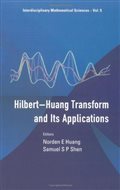Discussion of article "Moving Mini-Max: a New Indicator for Technical Analysis and Its Implementation in MQL5"
I'll be the first.
I looked at the original publication of Sigalazde, unfortunately he does not give the conclusions of the equations.... but not the point: based on my student experience with quantum mechanics I can say that this conclusion is probably quite simple)))).
Now some remarks and sketches.
Параметр m - это ширина окна сглаживания, которая в нашем случае характеризует способность мяча проходить через маленькие препятствия.
Generally speaking, the primary source interprets this parameter as "the inverse of the ball mass". I.e., depending on m (let's remember the basics of quantum mechanics:))), the uncertainty of the energy required to drag the ball under the potential barrier changes. It seems to me that rigid setting of this parameter is one of the reasons for frequent false signals. This can be justified by the fact that there are values on the market that are analogues of mass and, like the latter, characterise inertness. In the first approximation we can consider the amount of funds available to market participants as such value, in the next - their readiness to make certain decisions (market expectations). We can't estimate these factors directly from the chart, but there is a possibility to use at least the data on trading volumes. Depending on this, we can fine-tune the m parameter. I think it is worth a try.
Still, I would like to see the calculations - from what model Sigaladze proceeded. After all, by and large, the ball should overcome a potential barrier located "perpendicular to the market", on the energy axis, i.e. where the participants place orders/ You can see these potential barriers clearly here: http://fxtrade.oanda.com/analysis/historical-open-orders. I would solve this problem using quantum methods! And Sigaladze (it seemed to me so) makes some rather rough approximation, trying to project energies on the price axis. Hence there may be a mess: perhaps it is worth to apply some quadratic transformation to prices before processing in order to bring the coordinate representation closer to the energy one.
Thanks for the article in general, I once undertook a similar research, but either I got lazy or switched to something else)))
I ask others to comment too.

- www.oanda.com
Generally speaking, the primary source interprets this parameter as "the value of the inverse of the inverse of the mass of the ball".
Thanks, corrected to:
The parameter m is the width of the smoothing window, this parameter makes sense as a value inverse to the mass of the ball, it allows you to control its "penetration capacity".
Thanks to the author for the article!
В будущем я надеюсь представить более интересные технические индикаторы и их реализацию на MQL5.
I would like to see also an article of your performance about Hilbert-Huang transform (HHT).
- en.wikipedia.org
Thanks to the author for the article!
I would like to see also the article of your performance on the Hilbert-Huang transform ( HHT ) .
Hi, thank you for your feedback. I have just started to learn Russian, so I will reply in English: I will scan through http://www.amazon.com/Hilbert-Huang-Transform-Applications-Interdisciplinary-Mathematical/dp/9812563768 and see what is inside :-)
Best Regards,
Investeo

- reviews: 1
- www.amazon.com
Hi, thank you for your feedback. I have just started to learn Russian, so I will reply in English: I will scan through http://www.amazon.com/Hilbert-Huang-Transform-Applications-Interdisciplinary-Mathematical/dp/9812563768 and see what is inside :-)
Best Regards,
Investeo
Greets,
Try this one before paying $156 http://keck.ucsf.edu/~schenk/Huang_etal98.pdf
It's a very interesting article. Thanks to the author.
- Free trading apps
- Over 8,000 signals for copying
- Economic news for exploring financial markets
You agree to website policy and terms of use
New article Moving Mini-Max: a New Indicator for Technical Analysis and Its Implementation in MQL5 is published:
In the following article I am describing a process of implementing Moving Mini-Max indicator based on a paper by Z.G.Silagadze 'Moving Mini-max: a new indicator for technical analysis'. The idea of the indicator is based on simulation of quantum tunneling phenomena, proposed by G. Gamov in the theory of alpha decay.
Author: investeo